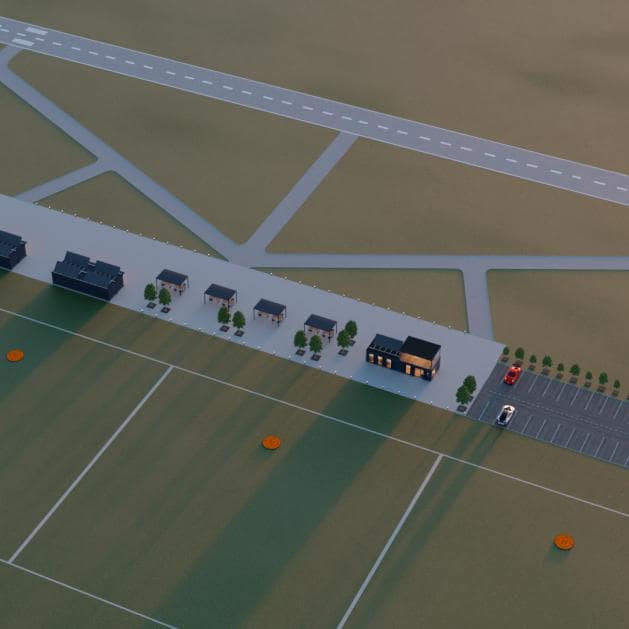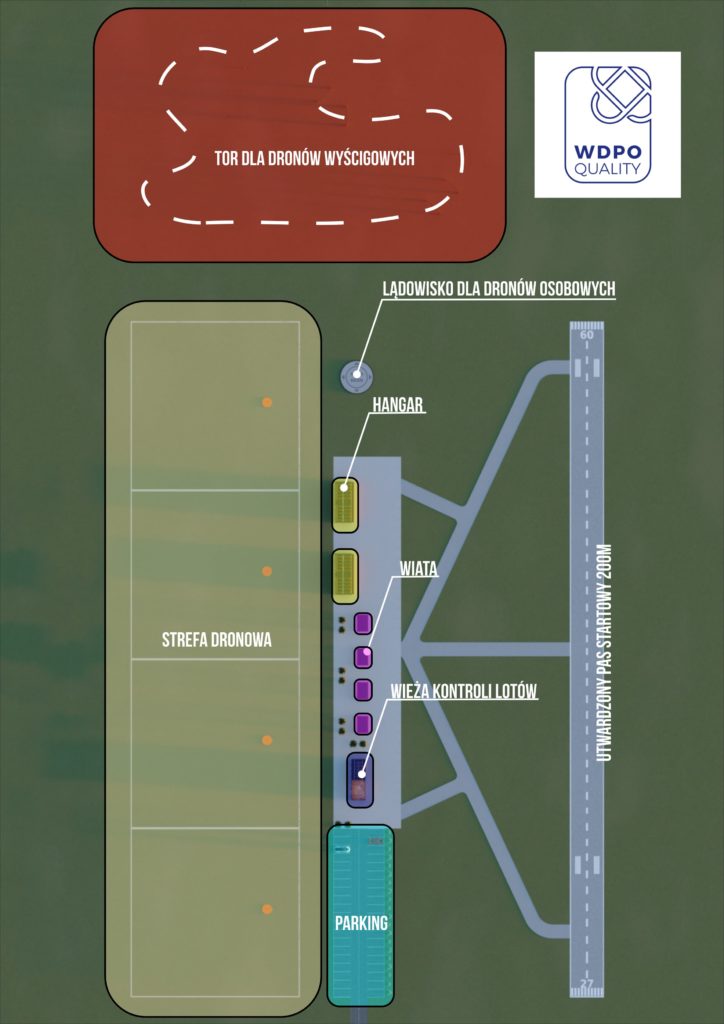

The increasing popularity of drones, both airplanes and multirotors, makes it necessary to create a specialized infrastructure that allows for safe flights. Appropriate airport infrastructure offers many possibilities: first of all, it allows to increase the level of safety of performed operations. nother advantage is the ability to fly with more demanding aircraft, including flights with large and heavy machines. The airport is also a place where you can safely conduct flight training. Airports will help in the development of the drone business thanks to the fact that they will allow for test flights with new machines.

The minimum area of the site is 2.5 ha. The area is dry, level, without undulations and wetlands.
The airport should have the following zones:
Maintaining the appropriate parameters of the runway for airplanes – in particular, its length, width, surface condition and the absence of obstacles in the extension of the runway axis will allow for safe operations with unmanned aircraft. At present, most of these flights take place at aerodromes intended for manned aviation. Often, flight tests are associated with the need to stop air traffic, which is a significant inconvenience for everyone.









